
Zanzibar is an insular semi-autonomous region which united with Tanganyika in 1964 to form the United Republic of Tanzania. It is an archipelago in the Indian Ocean, 25–50 km (16–31 mi) off the coast of the African mainland, and consists of many small islands and two large ones: Unguja and Pemba Island. The capital is Zanzibar City, located on the island of Unguja. Its historic centre, Stone Town, is a World Heritage Site.

Lamu or Lamu Town is a small town on Lamu Island, which in turn is a part of the Lamu Archipelago in Kenya. Situated 341 kilometres (212 mi) by road northeast of Mombasa that ends at Mokowe Jetty, from where the sea channel has to be crossed to reach Lamu Island. It is the headquarter of Lamu County and a UNESCO World Heritage Site.

Swahili architecture is a term used to designate a whole range of diverse building traditions practiced or once practiced along the eastern and southeastern coasts of Africa. Rather than simple derivatives of Islamic architecture from the Arabic world, Swahili stone architecture is a distinct local product as a result of evolving social and religious traditions, environmental changes, and urban development.

Chake-Chake is a town located on the Tanzanian island of Pemba and capital of Chake Chake District. It is in the centre of a deep indentation in the west coast called Chake-Chake Bay. Chake-Chake is historically the capital of Pemba Island, and the seat of Pemba's court. Pemba's only airport is 7 km south-east of Chake-Chake. The Mkama Ndume ruins are close to the airport in Pujini village.

The Khalid ibn al-Walid Mosque is a mosque in Homs, Syria, located in a park along Hama Street in ash-Shuhada Square. The mosque is dedicated to Khalid ibn al-Walid, an Arab military commander who led the Muslim conquest of Syria in the 7th century following the decisive Battle of Yarmouk, which put an end to Byzantine rule in Syria. His dome-topped mausoleum is located in a corner of the prayer hall and has served as a pilgrimage center. Two tall minarets with narrow galleries constructed of alternating horizontal rows of white and black stone are situated at the building's northwestern and northeastern comers and reflect the traditional Islamic architecture style of the Levant.

The Sulaymaniyya Takiyya is a takiyya in Damascus, Syria, located on the right bank of the Barada River. Commissioned by the Ottoman sultan Suleiman the Magnificent, the western building of the complex was built, following the plans of Mimar Sinan, between 1554 and 1559. Another building was added eastwards from it in 1566 to be used as a madrasa.
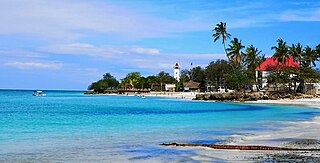
Nungwi, or Ras Nungwi, is a large village located in the far northern end of the island of Zanzibar. With a population of 30,762, Nungwi is the second largest settlement on the island. It is situated in the Nungwi Ward in the Kaskazini A District of the Unguja North Region. It is about 35 miles (56 km) north of Zanzibar Town on the Nungwi Peninsula, about an hour drive from Stone Town. To the south Nungwi shares a border with the neighboring Matemwe- and Tazari villages. Nungwi was traditionally a fishing village and dhow-building center, but is now a popular tourist destination, and for instance recognized in CNN’s list of "100 best beaches of the world" in 2014. West Nungwi has changed a lot since the 1990s and is now a popular tourist destination with numerous resorts, restaurants, bars, stores, etc. East Nungwi is quieter and generally more laid-back.

Lake Jipe is an inter-territorial lake straddling the borders of Kenya and Tanzania. On the Kenyan side, it is located south of the village of Nghonji while on the Tanzanian side, it is situated within Mwanga District, in Kilimanjaro Region. The lake is fed mainly by the Lumi River, which descends from Mount Kilimanjaro, as well as streams from the North Pare Mountains, being on the leeward side. The lake's outlet forms the Ruvu River. Kenya's unfenced Tsavo West National Park protects part of the lake's northern shore, while on the Tanzania side Mkomazi Game Reserve is nearby. The lake is known for its endemic fish, as well as water birds, mammals, wetland plants and lake-edge swamps, which can extend 2 kilometres (1.2 mi) from Jipe's shore.
The Mkuzu or Mkusu is a river of northeastern Tanzania. The Magamba Forest Reserve forms part of the landscape and there is a notable waterfall along the river named the Soni Falls, where the Mkuzu joins the Bangala River. The river also flows through the village of Kifungilo.
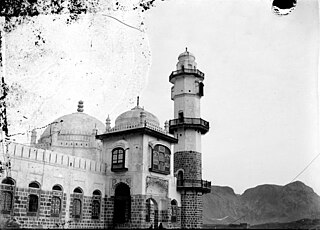
The Mosque of Abu Bakr al-'Aydarus or Aidrus Mosque is a Sufi mosque in Aidrus Street in Crater, Yemen. One of the principal mosques in Aden, it is named after Abu Bakr al-Aydarus, the wali (saint) of Aden.
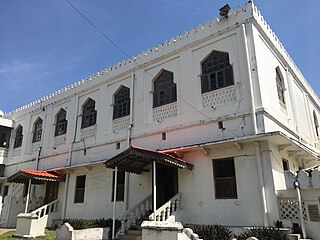
Ijumaa Mosque is a mosque in Stone Town, Zanzibar, Tanzania. The mosque was completely renovated in 1994 in the modern arabesque style.

Holy Ghost Mission is located in Bagamoyo, Tanzania. The pioneer mission was established by the Holy Ghost Fathers. The original Holy Ghost Church, built in 1872, is reportedly the oldest church on the mainland of East Africa, while the new church was built 1910–1914. In 1874, David Livingstone was interred for a night at the Holy Ghost Mission; the Livingstone Tower, a part of the original church, is named in his honor.
The following is a timeline of the history of Zanzibar City, Unguja island, Zanzibar, Tanzania. The city is composed of Ng'ambo and Stone Town. Until recently it was known as Zanzibar Town.

The siege of Mombasa was an attack on the Portuguese city of Mombasa and Fort Jesus by the army of the Ya'rubid ruler of Oman, Saif I bin Sultan, from 13 March 1696 to 13 December 1698.
The Saparmyrat Hajji is a mosque in Gökdepe, Turkmenistan. Commissioned in memory of the defenders of Gökdepe Fortress, it was built between 1994 and 1995, during the presidency of President Saparmyrat Nyýazow. The mosque—with its blue dome and four minarets—is a prominent landmark in Gökdepe.

Historical monuments in Pristina are made up of 21 monuments out of a total of 426 protected monuments all over Kosovo. A large number of these monuments date back to the Byzantine and Ottoman periods. Since 1945, the Yugoslav authorities followed the idea of constructing a modern Pristina by relying in the urban development motto “destroy the old, build the new” and this resulted with major changes in the structure of the buildings, their function and their surrounding environment. However, numerous types of monuments have been preserved, including four mosques, a restored orthodox church, an Ottoman bath, a public fountain, a clock tower, several traditional houses as well as European-influenced architecture buildings such as the Museum of Kosovo. These symbolize the historical and cultural character of Pristina as it was developed throughout centuries in the spirit of conquering empires.
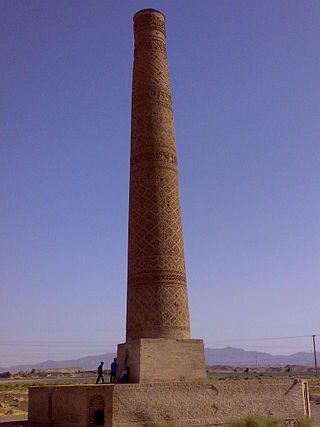
Khosrogerd Minaret is a 12th-century tower located 10 kilometres (6.2 mi) to the west of Sabzevar, Iran, and is all that remains of the Silk Road town of Khosrogerd, destroyed by the Mongols in 1220 AD. It is an example of Seljuk architecture.
Zanzibari independence is a political ambition of some political parties, advocacy groups, and individuals of Zanzibar, a semi-autonomous region territory within Tanzania, to become an independent sovereign state.
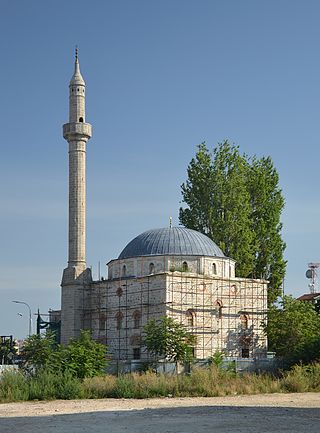
The Çarshi Mosque, also known as the Bazaar Mosque and the Taş Mosque, is the oldest building in Pristina, Kosovo, and it marks the beginning of the old town. The foundation of this mosque was laid out in 1389 during the rule of the Ottoman Sultan Bayezid I and its construction was continued during the reign of Sultan Murad II in the 15th century. The Çarshi Mosque was built to celebrate the Ottoman victory of 1389 in the Battle of Kosovo. Over the years, the mosque has undergone through several restorations. However, its stone-topped minaret has survived for over six centuries.
















